
| Lateral Casemoth (formerly known as Plutorectis xanthochrysa) OIKETICINAE, PSYCHIDAE, TINEOIDEA | (donherbisonevans@yahoo.com) and Stella Crossley |
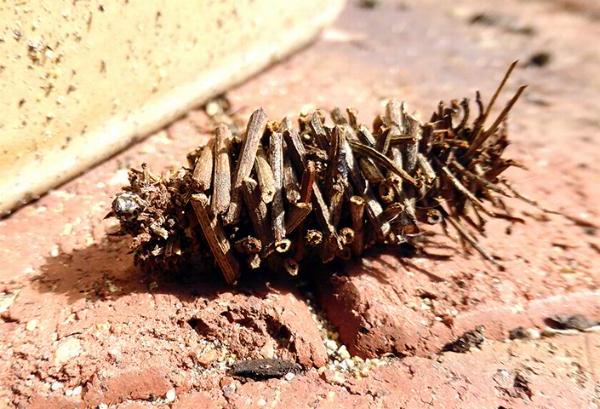
(Photo: courtesy of Brian Richards, Murdoch University, Western Australia)

| Lateral Casemoth (formerly known as Plutorectis xanthochrysa) OIKETICINAE, PSYCHIDAE, TINEOIDEA | (donherbisonevans@yahoo.com) and Stella Crossley |

(Photo: courtesy of Brian Richards, Murdoch University, Western Australia)
This Caterpillar lives in a portable silk case, which it camouflages with sticks, which are aligned roughly across the case axis.
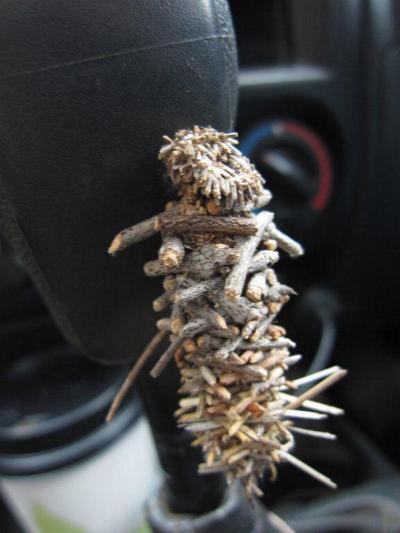
The caterpillars feed on
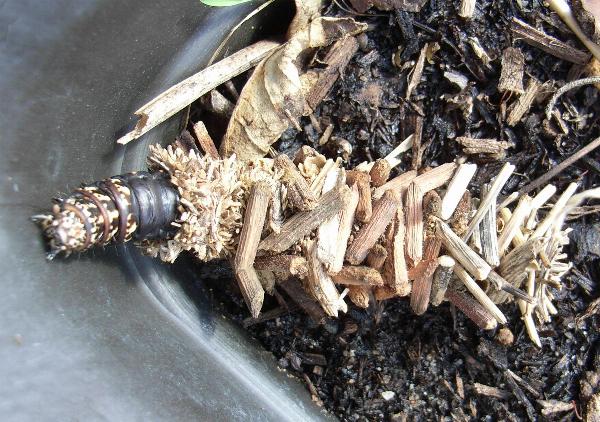
Only the chitinised head and thorax are normally protruded from the case to crawl and feed. They are off-white with a complex brown pattern. The grey unprotected abdomen is kept shielded in the case.
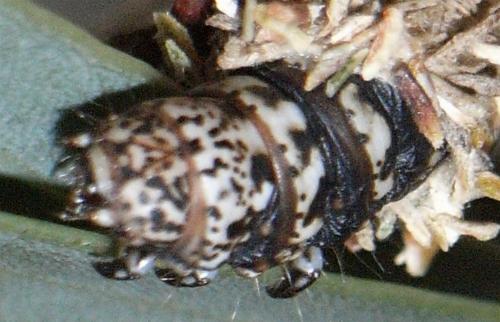
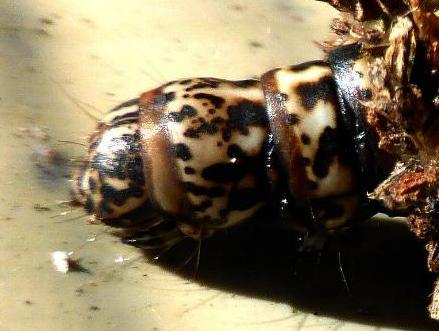
(Photo: courtesy of Brian Richards, Murdoch University, Western Australia)
close ups of head and thorax
The case of the male grows to a length of up to 4 cms. The case of the female grows to a length of up to 6 cms.
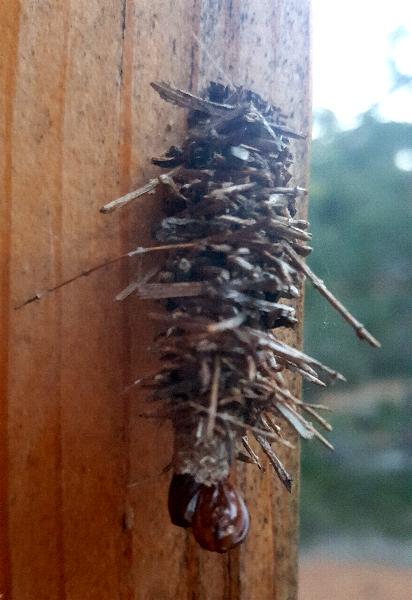
The male protrudes the pupa at the tail-end of the case before emerging.
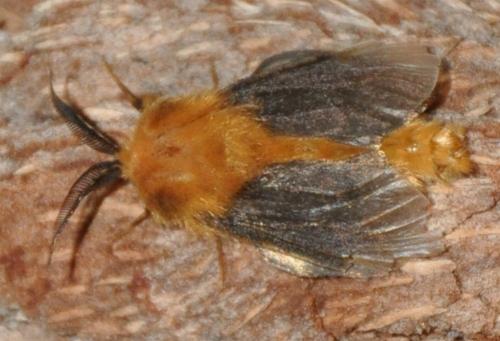
The adult male moth has a wingspan of about 3 cms. It has black wings, black antennae, and a hairy orange-brown head, thorax, and abdomen. The black scales on the wings rapidly wear off, leaving the wings nearly transparent.
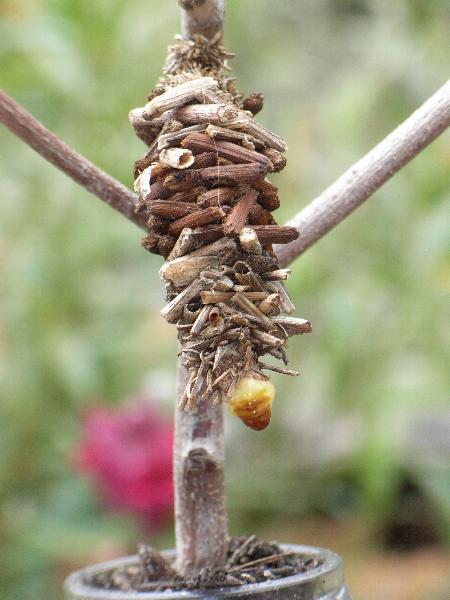
The female emerges inside the case. She does not leave her case when mature, but just protrudes her abdomen, presumably emitting pheromones to attract a male.
The species has found in
Further reading :
Edward Meyrick & Oswald B. Lower,
Revision of the Australian Psychidae,
Transactions and proceedings and report of the Royal Society of South Australia,
Volume 31 (1907), pp. 201-202, No. 14.
 caterpillar |  butterflies |  Lepidoptera |  moths |  caterpillar |
(written 25 March 2021, updated 24 November 2024)